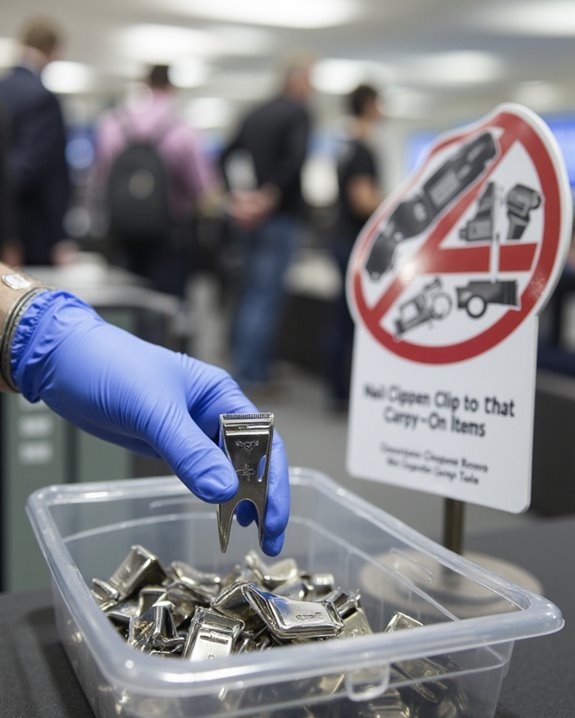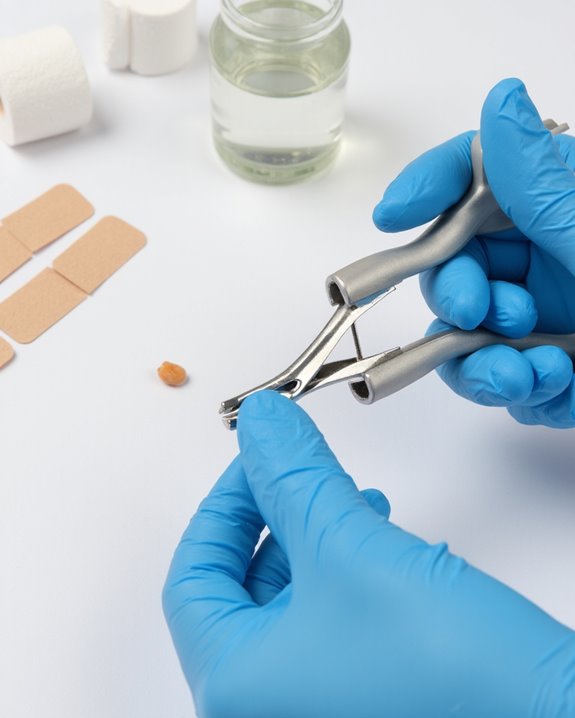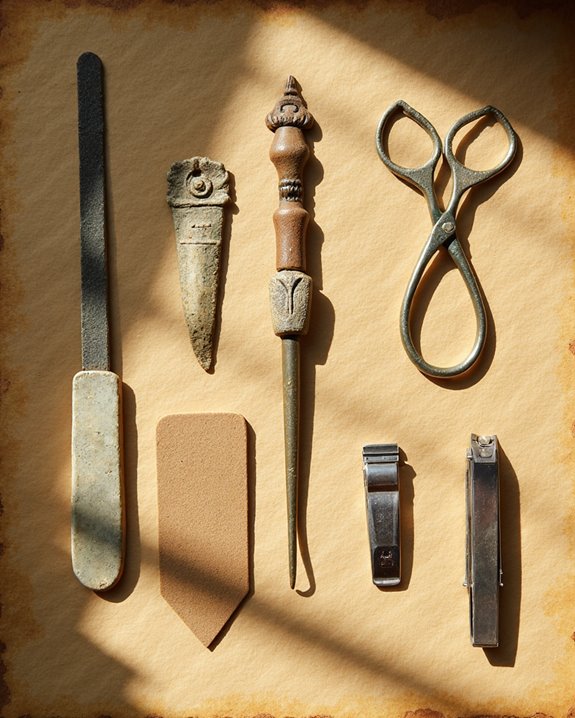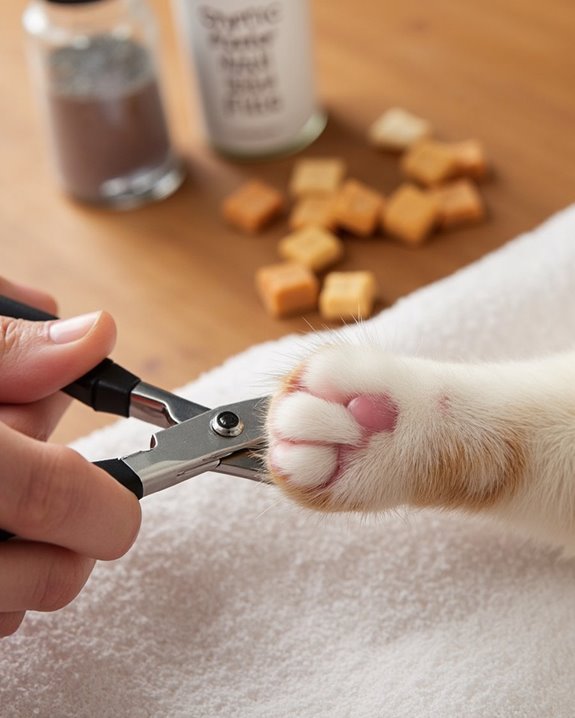Contrary to popular belief, standard nail clippers aren’t banned on planes. After 9/11, they were temporarily restricted, but since 2002, the TSA has permitted nail clippers in both carry-on and checked luggage. The risk assessment determined that nail clippers with small blades under 4 inches pose minimal security threat. Some international regulations have slight variations, with European Union allowing blades up to 6 cm (2.36 inches). The evolution of aviation security policies reveals how threat assessments have become more sophisticated over time.
Key Takeaways
- Nail clippers are not banned on planes; standard clippers have been allowed in carry-on luggage since 2002.
- Initial post-9/11 restrictions classified nail clippers with metal files as potential sharp objects.
- Current TSA regulations permit nail clippers with blades under 4 inches in both carry-on and checked baggage.
- The temporary ban stemmed from security concerns about small blades, but risk assessments reclassified them as low-threat items.
- Different countries have slightly different regulations, with blade length limits ranging from 4-6 cm internationally.
The History of Nail Clipper Restrictions in Air Travel
When the September 11, 2001 terrorist attacks forever changed aviation security, I’d like to point out that nail clippers became unexpected casualties in the swift security overhaul that followed. The TSA initially restricted numerous personal grooming items, including nail clippers with attached metal files, classifying them as potential sharp objects that could pose flight security risks. Early airport security measures created widespread confusion, with approximately 25% of bag searches in 2001-2002 involving small tools and grooming items. By 2002, however, the TSA reconsidered these restrictions, officially permitting standard nail clippers in carry-on luggage while allowing the metal nail files that had previously been prohibited. As aviation security evolved with reinforced cockpits and advanced screening technology, nail clippers were fully cleared for both carry-on and checked baggage. Additionally, the development of security screening technology has further enhanced the ability to safely allow grooming tools on flights.
Security Concerns: Potential Weaponization Risk Assessment
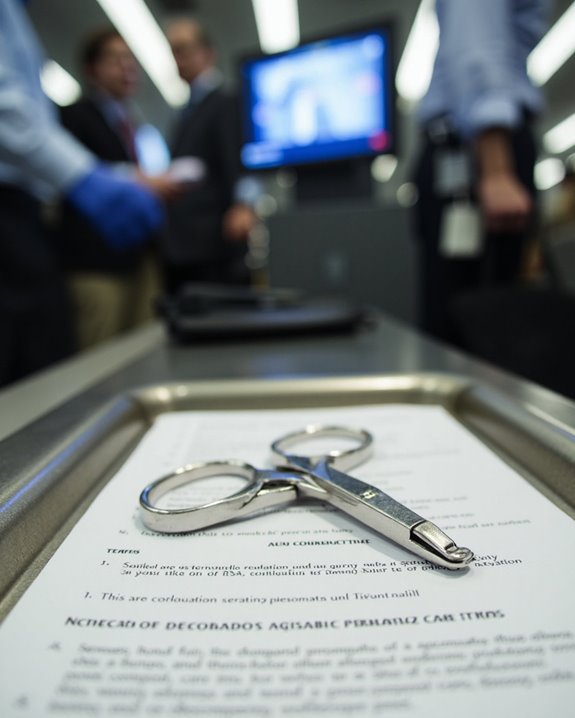
Why did nail clippers become such a controversial item in aviation security? Following 9/11, the Transportation Security Administration (TSA) temporarily restricted these common grooming tools during security screening due to concerns about their small blades. However, TSA regulations have evolved based on thorough risk assessments that classify standard nail clippers as low-threat items, allowing them in carry-on luggage today.
The data supports this decision: nail clippers and small scissors were involved in only about 25% of bag searches before policy adjustments, and their short blades (under 4 inches) make effective weaponization highly improbable. The authority that rests with the TSA has determined that nail scissors pose minimal threat compared to truly dangerous items like firearms and explosives, especially given modern aircraft protections like reinforced cockpit doors that provide multiple layers of security.
Current TSA and International Aviation Regulations
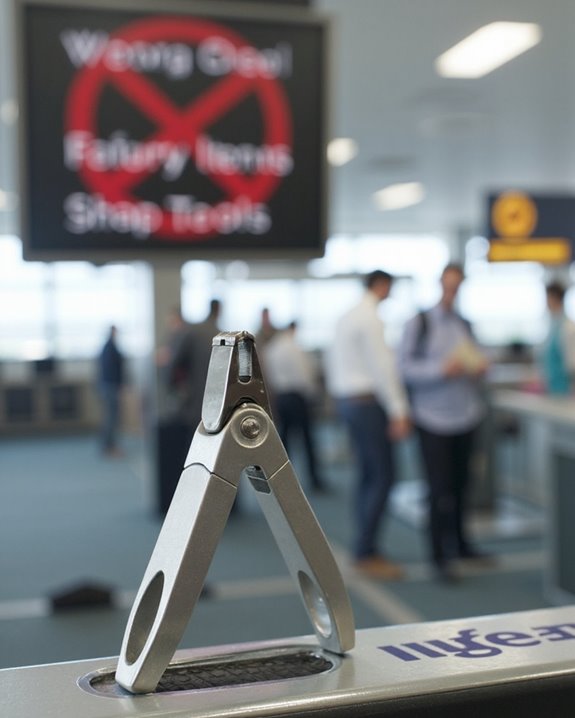
The global landscape of aviation security reflects significant variation in how nail clippers are regulated across different countries and security agencies. Contrary to popular belief, the Transportation Security Administration (TSA) allows nail clippers in both carry-on baggage and checked baggage, provided any attached blades measure less than 4 inches in length. These rules regarding nail clippers have evolved to balance security with passenger convenience.
Different countries maintain their own standards, however. The European Union permits nail clippers with blades up to 6 cm (2.36 inches), while Canada follows similar guidelines. Japan’s aviation authority enforces stricter regulations, limiting blade length to just 4 cm. These variations highlight why international travelers should verify specific regulations before packing, as what’s permitted by the TSA may be prohibited elsewhere.
Myths vs. Facts: Are Nail Clippers Actually Prohibited?
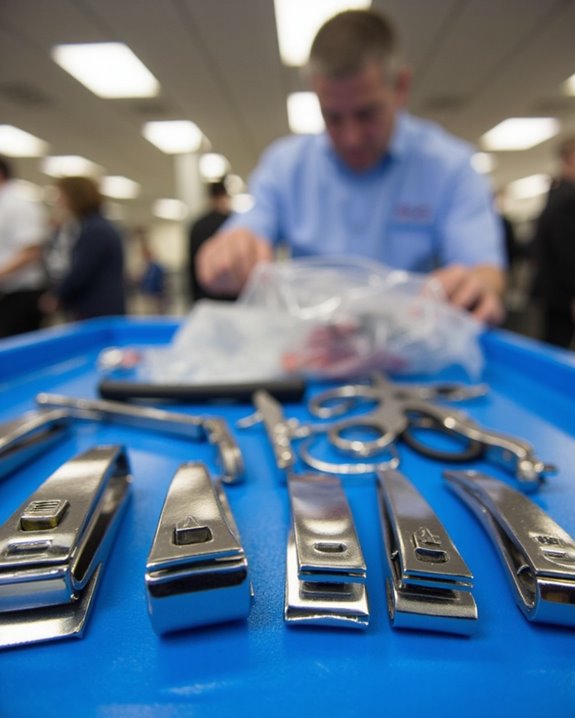
Persistent misconceptions about nail clippers on planes continue to confuse travelers, despite clear evidence to the contrary. I’ve found that many passengers mistakenly believe TSA bans bringing nail clippers in carry-on luggage, but this is simply untrue. The facts are clear: standard nail clippers are allowed in carry-on bags, and they’ve been permitted since 2002 when post-9/11 restrictions were revised.
Your pair of clippers, even those with attached nail files under 4 inches, can accompany you onboard without issue. The TSA classifies these items as personal care tools, not potential weapons. For international travel, similar rules apply in most countries, including the EU, where clippers with blades under 6 cm are permitted. If you’re ever uncertain, remember they’re always allowed in checked baggage as well.
Alternative Grooming Tools Allowed During Flights
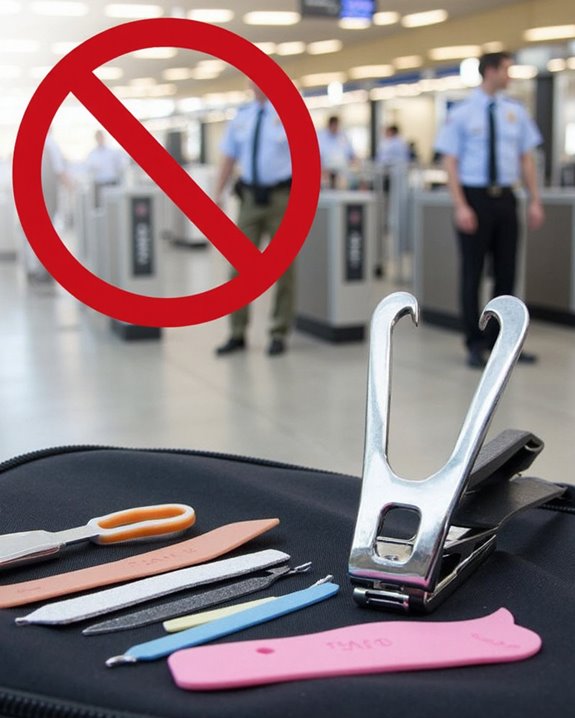
While standard nail clippers are permitted onboard flights, travelers seeking additional grooming options during their journey have several TSA and CAA-approved alternatives at their disposal. Nail files and emery boards are universally accepted in carry-on luggage, offering a lightweight option that won’t trigger security concerns from TSA agents or flight crews. These options often feature dual grit designs that provide versatility for shaping and finishing nails, making them a practical choice for on-the-go grooming. Passengers can also pack nail scissors with blades under 4 inches (or 6 cm under CAA regulations) in their personal item, providing precise grooming capabilities without security risks. Travel-sized grooming kits that include disposable razors and tweezers are generally permitted as well, though regulations may vary slightly by airline. When in doubt about any grooming tool, I recommend securing items in checked bags instead of carry-ons to avoid potential confiscation during the security screening process.
How to Properly Pack Nail Clippers for Air Travel
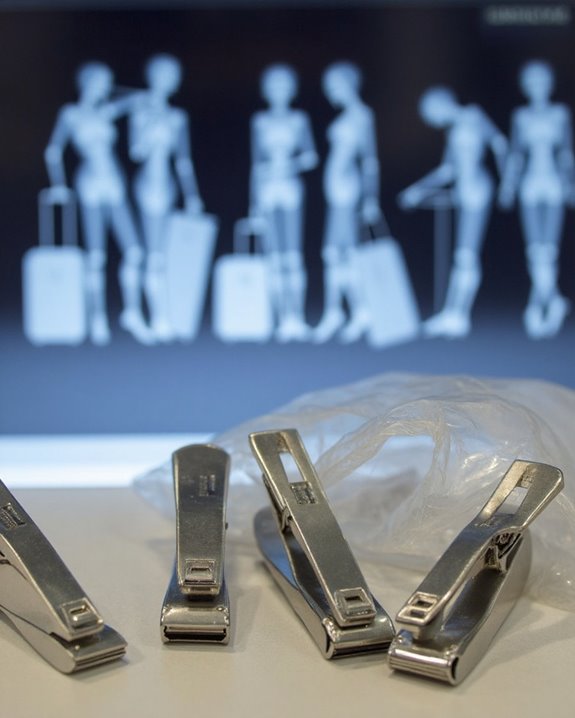
Moving beyond permitted alternatives, proper packing techniques for nail clippers can greatly streamline your airport security experience. I recommend carrying nail clippers in your carry-on bag if their blades are under 4 inches, as the Transportation Security Administration (TSA) allows these smaller tools. To avoid hassles at the security checkpoint, place clippers in a clear, zippered pouch for easy inspection, particularly if they have attached files shorter than 6 cm. Using appropriate nail file types can also help prevent the need to carry multiple tools during travel. If you’re uncertain about regulations or if your clippers have longer blades, pack them in your checked luggage instead. When doing so, I suggest wrapping the sharp edges to protect baggage handlers from injury. For the most current information before traveling, always verify rules on the TSA website, especially if you plan to use nail clippers on a plane.
Policy Evolution: How Security Measures Have Changed Since 9/11

How drastically did airport security transform after the events of September 11, 2001? The Transportation Security Administration (TSA), a government agency formed in response to the attacks, initially implemented sweeping restrictions regarding nail clippers and other small tools that might serve as weapons. In the immediate aftermath, even attached metal nail files were prohibited when it comes to air travel.
Frequently Asked Questions
Why Are Nail Clippers Not Allowed on Planes?
I need to correct your assumption—nail clippers aren’t actually banned on planes! Despite historical context of post-9/11 aviation rules, TSA doesn’t include them among banned items or flight hazards due to minimal safety concerns.
Why Can’t You Cut Your Nails on a Plane?
Did you know 87% of travelers find personal grooming in public distasteful? I discourage cutting nails on planes due to etiquette norms, hygiene practices, noise annoyance, space constraints, passenger discomfort, flight distractions, turbulence effects, and social manners.
Does TSA Allow Nail Clippers and Tweezers?
Yes, I can confirm TSA allows both nail clippers and tweezers in carry-on baggage. These grooming essentials fall under personal permits for travel hygiene. Pack them with confidence, though security options include stowing them in checked baggage as alternatives.
Are Nail Clippers Considered Sharps?
I’ll clarify that nail clippers aren’t classified as sharps. Despite having a blade, they don’t meet the sharps definition for hazard categories or pose significant blade risks requiring special safety protocols during edge evaluation or disposal.

